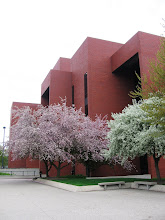A Vision for the Archives' Role in the Digital World
The students, faculty, and researchers who make up the customer base for academic libraries and archives are increasingly expecting more innovative and value-added services. Inspired by technological advances, they want flexibility, decentralized access, and a convergence of print and digital media to address their research needs.
As the demand grows for better and quicker access via the Internet to unique resources found in archival repositories, archivists with the skills and vision to prepare and make the rich resources of their collections available in digital format are at the forefront of a new professional frontier. The development of the digital archivist is driven by customer expectations and the emerging role of the archives in fulfillment of those expectations.
As archives and special collections continue to be a primary source for research materials to digitize that may generally be made available without worry of copyright infractions, the archival repository will increasingly play a pivotal role in the digital revolution.
At the same time that focus expands from curating paper-based materials to migrating those materials to digital form for increased accessibility, archivists are also concerned with the challenge of preserving and making available the vast universe of “born digital” assets. The creation of large data sets in “real-time” collections presents unique issues for archivists.
All of these challenges and opportunities create a need for forward-thinking professionals with new approaches to the field of archival science. Research shows that the role of the digital professional requires new competencies and skills beyond traditional training. Today’s digital archivist must combine the knowledge of traditional archival practices with expanded technological skills to achieve the vision of the archives as a place where print and digital media successfully converge to meet research needs.
Youngok Choi, Assistant Professor of Library and Information Science at Catholic University of America, and Edie Rasmussen, Professor and Director of the School of Library, Archival and Information Studies at the University of British Columbia, addressed the need for these new professionals based on a survey that they recently conducted of current digital professionals in U. S. academic libraries.
Among several findings, Choi and Rasmussen concluded that the constantly changing digital environment necessitates that digital librarians and archivists “must be able to adapt to change and continue to learn” and that more professionals educated in the area of digital libraries and archives will be required as institutions are digitally transformed. (D-Lib Magazine, September 2006).
As priorities shift due to digital advancements, new dimensions are being added to the archival and library professions. Archivists and librarians face the challenge of acquiring the necessary skills to both strengthen their traditional roles and quickly acclimate to a dynamic and transformative new environment.
A visitor to the Ball State University Libraries’ Archives and Special Collections will quickly see how the unit’s personnel are adapting to this dynamic digital environment and are embracing a new vision of our role as digital archivists. As the scanners move across the printed page or photograph, the digital projector illuminates the image of a rare document for a class of students, and the archivists create multiple Web pages of finding aids and online exhibits, the advent of the digital archivist and the progression towards the digital archives vision is evident in this archival repository.
Welcome to the home of special collections AND digital projects, a convergence that will produce new and exciting resources for generations of students and researchers.
For more information, contact John B. Straw, Ball State University Libraries’ Director for Archives and Special Collections, JStraw@bsu.edu, (765) 285-5078.
This newsletter article first appeared in The Library Insider 5(4): 6; April 2007.
Labels: academic libraries, archives, archivist, digital collections, newsletter


0 Comments:
Post a Comment
<< Home